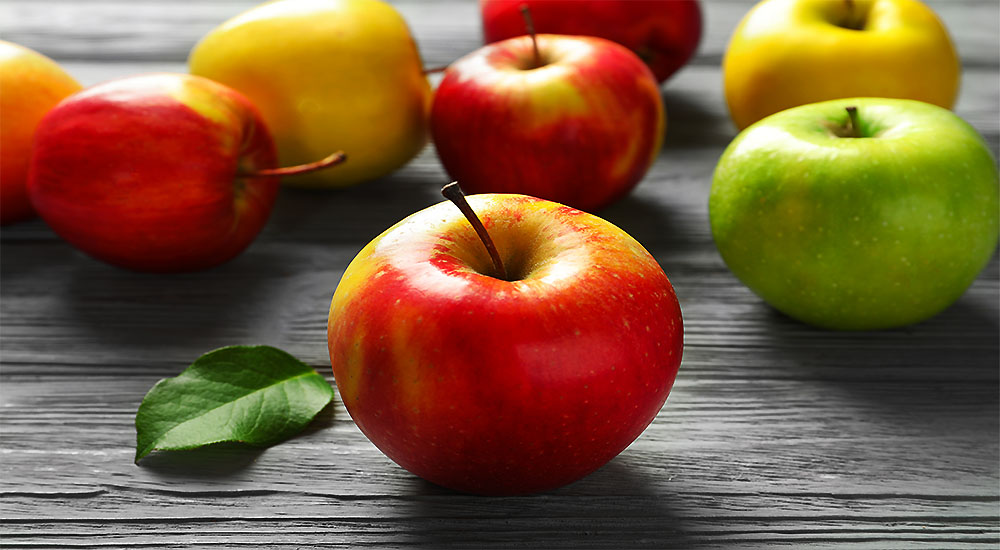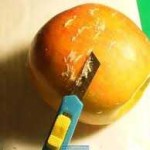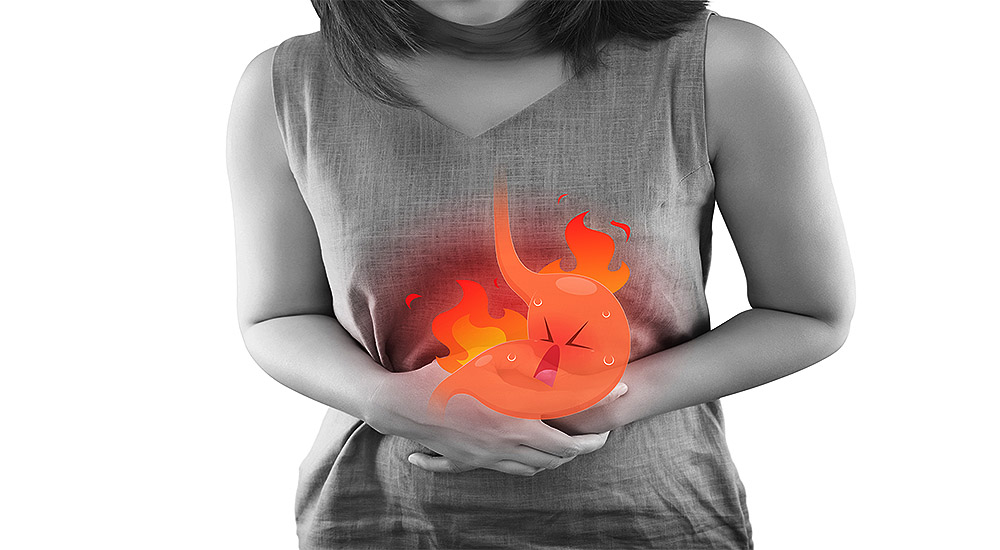An Apple a Day Making You Sick?

Is An Apple a Day a Bad Idea?
We’ve all heard the rhyming phrase, “An apple a day keeps the doctor away”, but perhaps it’s just the opposite for some people. I received a question from a reader on our website that stated he suffered gluten exposure from the wax on his apple.
I had never heard this before but as a clinical nutritionist, I love to learn new things that I can pass along to my patients and readers. Therefore I did a little research and discovered that while gluten does not appear to be an issue, dairy and soy contamination most certainly do seem to be present on certain apples as well as other produce.
Wax or shellac is commonly put on our foods to prevent moisture loss and bruising during shipping. The wax also increases its shelf life. If you’ve ever picked up a non-organic pepper or eggplant you’ve likely noticed that they are almost slippery – this is due to the wax put on them.
How Dairy Products get on Your Fruits and Veggies
Within the wax or shellac, there are two types of proteins used, one is soy and the other is casein, a milk protein. This means that if you tend to react to soy or dairy products, you may very well react to the healthy fruits and vegetables that I continue to encourage you to eat! I must confess to getting frustrated at the many ways in which our food system is tampered with. Wax is used on a number of common fruits and vegetables such as:
• Pome fruits (has a core with seeds): apples, pears
• Stone fruits: plums, nectarines, and peaches
• Tropical fruits: papayas, mangos, and passion fruit
• Citrus fruits: lemons, limes, grapefruits, oranges, and tangerines
• Vegetables: avocados, cucumbers, eggplant, bell peppers, green peppers, hot peppers, parsnips, sweet potatoes, squash, tomatoes, and turnips
Of course, if you peel the fruit or vegetable then the wax won’t be an issue, but washing it doesn’t work. The wax will not wash off.
Soy is Also Found on Unsuspecting Produce
Ask you grocer about the kind of wax used on the surface of their non-organic fruits and vegetables. It can be carnauba wax from the carnauba palm tree, beeswax, or shellac from the lac beetle.
These are the more natural of the possible waxes utilized and likely healthier than the petroleum-based options that contain solvent residues or wood rosins (this comes from the stumps of pine trees). But the concern mostly stems from the additives to these waxes such as:
♦ Ethyl alcohol added to improve the consistency of the wax
♦ Milk casein added because it helps to form a film
♦ Soy protein that is an alternative to milk casein
♦ Soap added as a flowing agent
What You Can Do

I would recommend asking your grocer to know for sure, especially if you are trying to avoid casein (which I highly recommend that you do) and/or soy. When it comes to organic apples you can definitely find some that do have wax but not for the reason you would think. Why is that?
It turns out that this is something that the apple produces naturally as a protection to the fruit. It is not being added and thereby is not unhealthy to consume. The take-home here is simply information.
Here at Root Cause Medical Clinic, we find that some patients are exceedingly sensitive to any exposure to the foods that bother them. When it comes to gluten intolerance as an example, we know that exposure is qualitative and not quantitative.
In other words, it’s not the amount of gluten but rather any discernable gluten that is the problem for those suffering. There is nothing worse for a patient than feeling poorly and driving yourself crazy trying to figure out how you got contaminated.
Personally, I would never think to blame an apple or a pear for a dairy or soy contamination… So for those who perhaps considered that they were reacting to certain fruits and vegetables for a different reason, this may be an eye-opener.
For those who aren’t particularly sensitive, this may be an insignificant degree of exposure and not something to worry about. But if you’re favorite fruits and vegetables happen to be on the above list you may wish to speak with your grocer to get an idea if any inadvertent exposure to an allergen or sensitive food is occurring.
The concept of bio-accumulation means that a toxin is accumulating in the body over a period of time and is something that we work with quite often in the field of clinical nutrition.
This could be, therefore, significant as time passes and you continue to eat these waxy foods. I hope this was informative. If your health is not where you would like it to be please consider taking advantage of free health analysis.
Do you need help with your health?
We have the diagnostic and testing tools, the clinical experience, and a different medical approach to discovering the root cause of why you have the symptoms that are bothering you. As long as you are ready to make some dietary and lifestyle changes, we can help you. We will "hold your hand" through the changes, step by step, to make each step an easy one. We are located in Clearwater, FL, at 1000 S Ft Harrison, at the corner of Ft. Harrison Ave. and Magnolia St. There is plenty of parking space directly accessible from Ft Harrison. If it is not convenient for you to come to Root Cause Medical Clinic, we offer telehealth/telemedicine consultations to residents of certain states. Call us for details.
Contact us for a Consultation – Call 727-335-0400

Dr. Vikki Petersen DC. CCN
Founder of Root Cause Medical Clinic
Certified Functional Medicine Practitioner
Dr Vikki Petersen is a public speaker, author of two books, several eBooks and creates cutting edge content for her YouTube community. Dr Vikki is committed to bringing Root Cause Medicine and its unique approach to restoring health naturally to the world.
Ask a Doctor
Have a health concern you'd like to speak with a doctor about? Or just want clarity on a subject? Ask Us!


